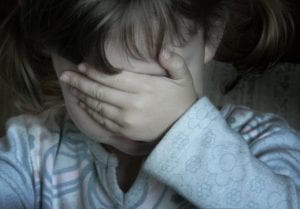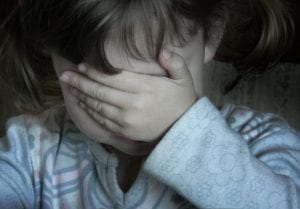 The evidence clearly shows that the mental health of Americans has declined since the start of the COVID-19 pandemic – and more so for teens, older adults, young mothers, and minorities. [Read more…]
The evidence clearly shows that the mental health of Americans has declined since the start of the COVID-19 pandemic – and more so for teens, older adults, young mothers, and minorities. [Read more…]
Parenting Programs Can Help Prevent Child Abuse
 Child abuse remains a serious problem: Nearly 700,000 children are abused in the U.S annually. No one needs an academic study to understand that abuse and neglect take a terrible toll on young people, their families, and society. We now have clear evidence that child abuse has long-term effects on its victims’ mental and physical health throughout their lives. [Read more…]
Child abuse remains a serious problem: Nearly 700,000 children are abused in the U.S annually. No one needs an academic study to understand that abuse and neglect take a terrible toll on young people, their families, and society. We now have clear evidence that child abuse has long-term effects on its victims’ mental and physical health throughout their lives. [Read more…]
To Excel in Sports, Try Them All
 Tennis champions Venus and Serena Williams started playing tennis at age 4 and began playing professionally as teenagers. Similarly, golf phenomenon Tiger Woods first held a club at age 2 and won his first junior world championship at age 13. [Read more…]
Tennis champions Venus and Serena Williams started playing tennis at age 4 and began playing professionally as teenagers. Similarly, golf phenomenon Tiger Woods first held a club at age 2 and won his first junior world championship at age 13. [Read more…]
Why Cross-Ethnic Friendships Are Good for Kids
 It’s well established that friendships are important influences on youth. Studies show that peers affect teens’ body image, physical activity levels, likelihood of smoking, and much more. A growing field of research demonstrates that the race and ethnicity of friends matter too.
It’s well established that friendships are important influences on youth. Studies show that peers affect teens’ body image, physical activity levels, likelihood of smoking, and much more. A growing field of research demonstrates that the race and ethnicity of friends matter too.
For starters, there is a large body of evidence that shows that face-to-face interactions between members of different racial groups reduces prejudice. In other words, when you personally interact with someone from a different racial or ethnic group, you’re more likely to approach other people from that group with an open mind. [Read more…]
What We Know About Opioids and Child Mistreatment
 Opioid use has surged during the COVID-19 pandemic. Data show the use of fentanyl and methamphetamine climbed steeply in 2020 and drug overdose deaths jumped by 18% last year.
Opioid use has surged during the COVID-19 pandemic. Data show the use of fentanyl and methamphetamine climbed steeply in 2020 and drug overdose deaths jumped by 18% last year.
The opioid epidemic has serious consequences for millions of Americans. Opioid misuse increases the risk of illness from COVID-19 and leads to long-term consequences for mental and physical health. People who misuse illegal substances are more likely to experience job loss, interpersonal violence, and become involved in criminal activity. [Read more…]
This Parenting Style Is Proven to Build Independence
As a parent, it can be useful to understand which parenting style comes naturally to you, as well as the pros and cons of each style. But there is one parenting style you may not have heard of, one that researchers have found supports psychological health, academic achievement, and positive attitudes toward school. [Read more…]


 More than 90 percent of teenagers in the U.S. have a smartphone. Access to this type of technology and social networking changes the playing field for young people who are simultaneously developing a sense of identity and new social relationships.
More than 90 percent of teenagers in the U.S. have a smartphone. Access to this type of technology and social networking changes the playing field for young people who are simultaneously developing a sense of identity and new social relationships.  Transgender
Transgender




